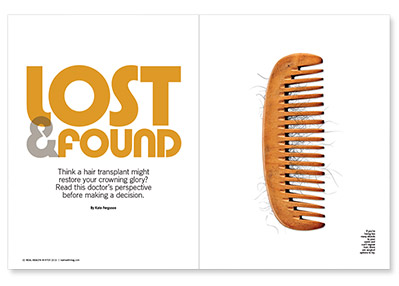
Recently, when paparazzi snapped pictures of Naomi Campbell boarding a yacht after a swim, the images triggered a barrage of news stories about the supermodel’s denuded hairline. As Campbell cavorted in the warm blue waters surrounding Ibiza, where she was on vacation with her boyfriend, the tranquil sea had slicked back her hair and revealed her secret. Rumors quickly circulated that the catwalk queen was suffering from traction alopecia. Whatever the cause, the picture clearly showed Campbell’s damaged edges and bald scalp.
Traction alopecia is just one of many hair conditions that can lead to hairline damage and loss. When observed in African Americans, the condition seems to affect women more because it’s mostly caused by trauma from hairstyles that put too much tension or pressure on delicate hairline follicles.
“Tight cornrows stress the hair follicles along the temporal region [the side of the head], and ponytails have a tendency to cause hair loss along the frontal hairline,” writes Matt L. Leavitt, MD, in his book Women and Hair Loss: A Physician’s Perspective. Leavitt is a board-certified dermatologist, the founder and medical director of Medical Hair Restoration and a recognized authority on hair transplants. The procedure is one many people consider when everything else they’ve tried has failed to stop their hair loss.
Of the three main ways doctors can surgically address patients’ hair loss and restore their tresses, transplant is the method most commonly used. During the past few years, this hair restoration technique has advanced and evolved into a fine art. As a result, fewer doctors perform the other two procedures: flap surgery and scalp reduction.
Hair transplantation is a simple yet complex procedure. Basically, a surgeon removes a narrow strip of scalp with growing hair from the back of a patient’s head and uses that to fill in thinning areas or bald spots. After cleaning the scalp, the doctor injects an anesthetic into the donor site—the area from where the scalp strip will be taken. (Usually, the best site source is the back of the head where the hair is more dense.) Then the doctor removes the scalp and sews the area close. Next, the surgeon slices the scalp strip into about 500 to 2,000 little sections, or grafts, that contain one or more hairs. After cleaning and numbing the area where the hair is needed, doctors punch a hole into the patient’s scalp with a needle, or make a slit there with a scalpel, and then implant the grafts.
About three weeks after surgery, the transplanted hair falls out. A few months later, new growth follows. Within six to nine months, most people realize 60 percent of newly grown hair.
But Leavitt advises patients to realize they may need more than one hair replacement surgery session to get the most satisfying and effective results.
In addition, like many other doctors, Leavitt cautions those considering hair transplants to remember that the procedure involves possible complications. This is rare, he explains. And if complications occur they’re most often limited to swelling, tenderness, slight bleeding or itching that’s usually confined to the donor site.
Other transplant risks include infection, scarring and the possibility that the new hair growth won’t look natural. This is why health advocates stress that people discuss in advance the potential risks and benefits of the procedure with their doctors. What’s more, “a potential patient must do [his or] her own screening of the physician,” Leavitt suggests.
Some of the many questions patients should ask include: How long has the doctor been doing hair transplants? Are there “before” and “after” pictures to see? And will lab tests be done?
In general, the difference between good and bad results depends on many different variables. Some of these factors include the technical aspects of the procedure, a physician’s expertise, patient expectations, the pattern of hair loss, the client’s emotional needs, family history, budget, the ability of the medical technicians, donor availability, health, age, race, the rate of past as well as present hair loss and the quality, quantity and density of hair desired.
If you aren’t satisfied with what a doctor says about any of these variables, Leavitt suggests this easy fix: Eliminate him or her from your candidates list and keep looking for another board-certified transplant surgeon.







Comments
Comments